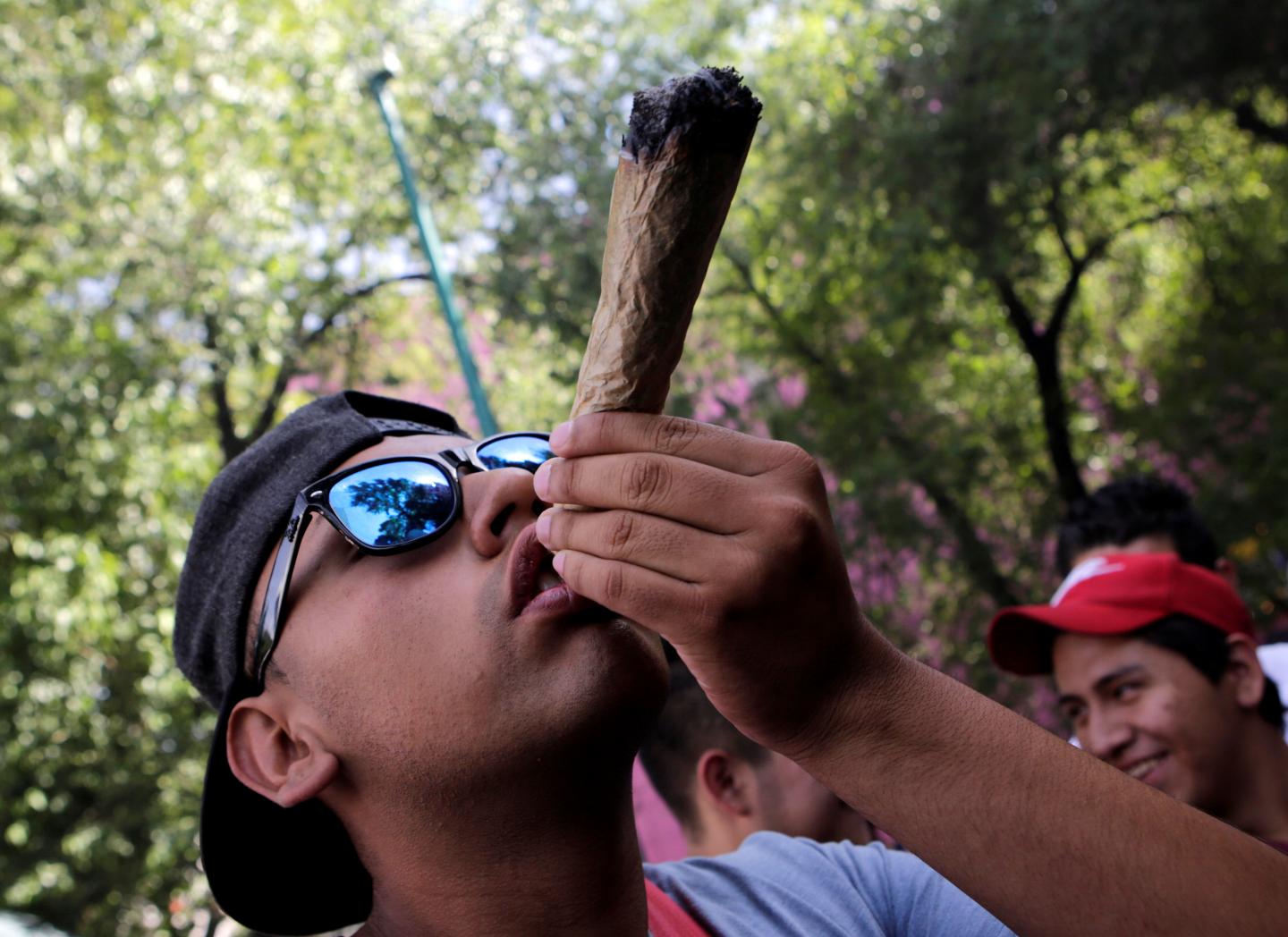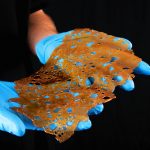If you’re just getting into concentrates, you’re probably wondering “what is shatter and what’s all the hype about?” Here’s everything you need to know to get started.
What is Shatter?

Shatter falls under the category of butane hash oil (BHO), which is a specific class of cannabis concentrate. Like all plants, marijuana contains an essential oil that can be extracted using a solvent. Shatter, like all BHOs, is created using the solvent butane. To separate psychoactive cannabis resin from unwanted plant material, butane binds with fatty molecules that give cannabis strains their crystal-coated appearance. The end result is a concentrate that produces between 40 and 70 percent THC on average.
Hard and see-through, shatter earned its name for its glass-like consistency. A high-quality shatter will be light to dark amber in color. Shatter is always translucent, which makes it distinct from other forms of butane hash oil. Waxes, budders, and crumbles are all opaque and malleable. Shatter, on the other hand, can take on a texture more akin to hard candy. Of all types of BHO, shatter has the longest shelf life.
Over time, however, the concentrate will begin to form crystals and lose its glossy shape and texture. On average, a properly stored shatter can last for several months. Many people extend the shelf life of their shatter by keeping it in a refrigerator. Yet, the concentrate will also keep well if stored in a cool, dark, dry, place in an air-tight and size-appropriate container.
Apart from its extended shelf-life and crystal-like appearance, whether or not you choose shatter above all other concentrates is a matter of personal preference. Shatters, waxes, and crumbles are all similar variations of the same thing. A well-made shatter, however, shows a little more skill and craftsmanship that many other types of concentrates. Getting a smooth glass finish on a shatter can be tricky. So, an attractive shatter provides a solid indication that the artisan behind the extract really knows their stuff.
The hard and glass-like texture of shatter also makes for a slightly different dabbing experience. Waxes and crumbles are softer, making them easy to melt in an oil rig. Shatter, on the other hand, can take a while to fully evaporate. For this reason, those who like to prolong their inhales will enjoy the slow-burning nature of shatter. If you’re hoping to get the best results from a shatter, consider heating your shatter to a lower temperature (350-400°F) and using a carb cap to preserve flavor and provide a comfortable experience.

How Shatter is Made
Butane hash oil was one of the first solvent-based cannabis concentrates to hit the market. Crude, backyard attempts at BHO showed up on some dispensary shelves, as brave home extractors sold their concentrates back to cannabis collectives before regulations and lab testing became the standard.
Now, however, the concentrate game is different entirely. Gone are the days of PVC pipes, cheesecloths, and fire extinguishers. Making high-quality shatter is a high-tech business that requires special equipment and a strict adherence to laboratory safety protocol. While butane is an excellent solvent, the gas is also highly flammable. When handled incorrectly, it can easily explode.
So, today’s high-quality shatter is made using special extraction equipment that not only prevents excess solvent from staying in the final product but also protects the extraction artists during the process. Extraction equipment is loaded with dried plant material, which is then passed through the butane solvent. The extract is also filtered, placed under vacuum pressure, and heat, ensuring that the cannabinoid-laden resin is sufficiently separated from the plant material. The end result is a golden liquid, which is then spread onto a baking sheet.
After extraction, the BHO is then placed into an oven for “purging.” The purging process evaporates any excess solvent that may be left in the concentrate. Once purging is through, shatter is left to cool and harden into its glass-like texture. Any agitation during this process may transform the shatter into a wax or a crumble.
Dabbing Shatter vs. Oil

Due to its hard texture, shatter is easier to dab than oil. While shatter is technically one formation of cannabis oil, the word “oil” is often used to describe cannabis concentrates with a runny or honey-like consistency. Unlike with oils, it may be necessary to gently heat your dab tool before dabbing in order to make the shatter easier to manipulate.
Shatter also typically has more flavor than the standard oil. Oils are usually extracted using CO2 as a solvent, which transforms them into a liquid. Different solvents, however, remove different terpene aroma molecules during the extraction process. Butane extraction generally allows for a greater amount of cannabis biomolecules to remain in the final product.
Dabbing Shatter vs. Wax

Shatter and wax are both types of BHO. The difference is in the preparation. To make a wax, the concentrate is agitated before it cools. This agitated wax can then be whipped further to create a budder. These waxy products tend to be softer. You can expect this softer material to melt on a nail faster than a hard, glassy shatter.
How to Properly Dab Shatter

Dabbing is all about temperature. The safest way to consume concentrates is via vaporization. Vaporization happens between 315 and 450℉. During vaporization, concentrates are heated just to the point of evaporation, creating a steam. When temperatures are increased, combustion occurs. Combustion transforms vapor into smoke, making dabbing a high-temperature way to smoke cannabis concentrates.
To determine the temperature of your dab nail, you need to either use a laser temperature gun or an electric dab nail. Both tools require a financial investment, yet the only other alternative is using a concentrate vaporizer. A portable concentrate vaporizer offers a slightly different experience than dabbing with an oil rig, however many consumers prefer the portability of a handheld vape.
- Use a heat-safe dab tool to scoop up a small dollop of concentrate. If your shatter is tough, gently heat the dab tool with a lighter prior to scooping. An appropriate size for a beginner or moderate consumer is one to two square millimeters. Set your loaded dab tool to the side.
- Make sure that your dome or carb cap is nearby, depending on the type of nail you are using.
- Use a torch to heat a dab nail for a minimum of ten seconds. Some dabbers prefer to heat the nail until it begins to develop the slightest hints of red. Then, they let it cool for three to five seconds or so before adding oil.
- Once the nail is hot, slide on your dome and quickly touch the loaded dab wand to your nail as you inhale, clearing the rig.
- If using a carb cap, place on the cap shortly after beginning to inhale.
- Do not remove or reload the nail until the nail has cooled.
When dabbing, it is important to keep in mind that the overall experience changes as you increase the temperature. High-temperature dabs can reach up to 900℉, which not only causes more damage to lung tissue but also releases more carcinogens during the combustion process.
The safest way to dab is to use low-temperature vaporization. However, if you do not have a concentrate vaporizer, heating your nail to a low temperature and using a carb cap will provide the closest experience.
How to Dab Shatter On a Quartz Nail
No matter what type of nail you use, the basic instructions for dabbing are more or less the same. Though, it is important to keep in mind that dabbing is a high-heat activity. As such, it is necessary to use heat-safe quartz if you decide to choose a glass nail. Apart from quartz, glass nails are prone to shatter or crack when exposed to excess heat, especially excess heat that has been repeated over time.
When dabbing shatter on a glass nail, it is first necessary to season the nail by heating it until it begins to show the faintest hints of red. Then, allow a small amount of shatter to sizzle on the nail before use. Use your dab tool to rub the base and inner sides of the nail while it seasons.
Quartz nails are sturdy and allow for excellent flavor, but they also lose heat quickly. When dabbing with a quartz nail, it is necessary to move fast so that you do not waste expensive shatter by using a nail that isn’t quite hot enough.
How to Dab Shatter on a TI Nail
Like a quartz nail, it is necessary to season your TI nail when using it for the first time. To season your titanium nail, simply heat the nail until it begins to show the faintest hints of red. Then, use your dab tool to rub shatter all around the bottom and inner rims of the nail.
Unlike quartz nails, TI nails have excellent heat retention. Dab nails made from titanium can take longer to cool down than other nails, so before you dab shatter on a TI nail, make sure to wait a few seconds before touching your concentrate onto the nail surface if it begins to show hints of red.
How to Dab Shatter on a Quartz Banger
Of all of the ways to dab, using a banger is perhaps the most cost-effective. The bucket style design of a banger allows for superior heat retention. In contrast, both domed and domeless TI and quartz nails can quickly lose heat due to their shallow constructions. For this reason, you may not need to heat your quartz banger as long as you would heat a TI or standard quartz nail.
You do, however, need to season your banger before use. To season, heat the banger with your torch from below. Then, use your dab tool to melt a little shatter on the bottom and partly up the sides of your banger. Seasoning your banger not only seals the small pores in the material before your first dab but also helps remove and burn off any debris that might remain on the banger after being made and sold.
Where Can You Find Shatter Wax for Sale?
The only place you can legally find shatter wax for sale is at sanctioned medical and recreational dispensaries. In Canada, concentrates are only sold legally to medical cannabis patients. In the United States, concentrates can be purchased by anyone in states that have legalized and regulated cannabis for adult use. Every state and legal access point will have its own requirements for how much shatter you are able to purchase.
What is the Average Shatter Wax Price?
As concentrates, you can expect a gram of shatter to cost more than even some exceptional top-shelf flower. In general, the price of shatter depends on the potency of the individual concentrate. The higher the potency, the more you can expect to pay for your concentrate. While the average gram of shatter will run between $25 to $30, some high-end concentrates can reach the $50 range and beyond depending on where it is purchased and the total concentration of cannabinoids.
(146)





Leave A Reply